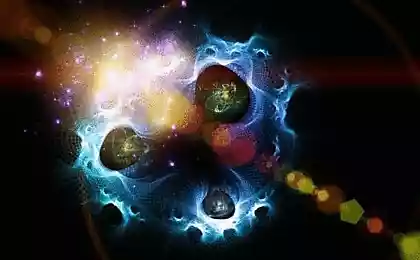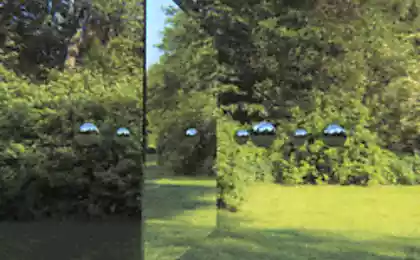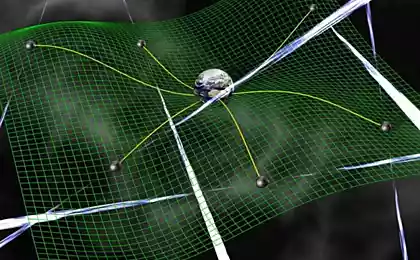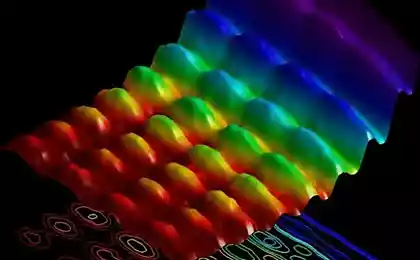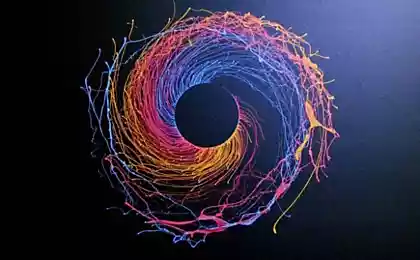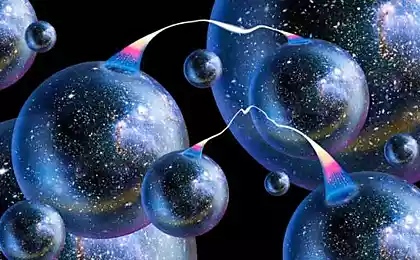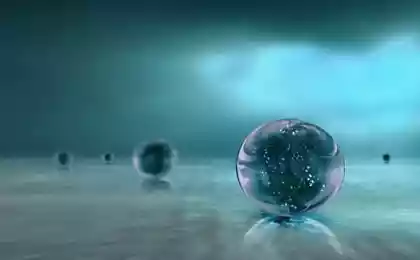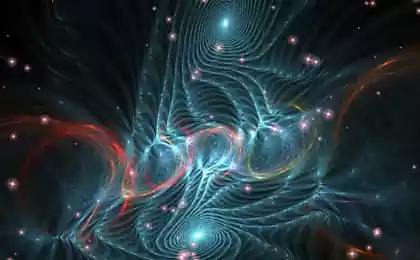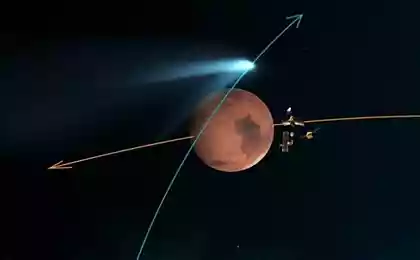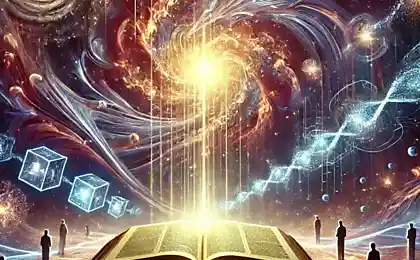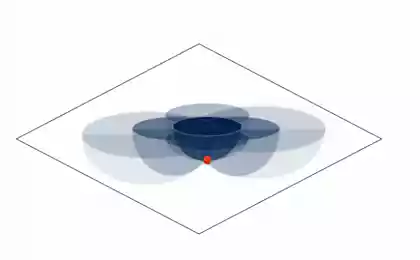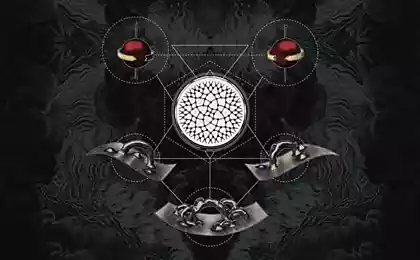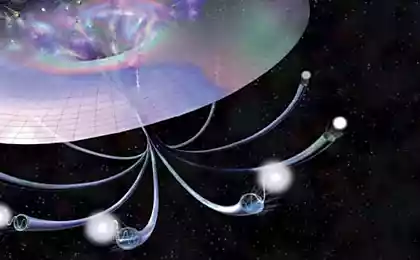757
The quirkiness of quantum theory
To the beginning of the twentieth century the theoretical physics has mapped out the arc to inform about his death: all the basic laws of our world, as it seemed, it was opened, remained sheer nonsense. Masters of Sciences even tried to dissuade young people from studying physics. No momentous discoveries had not been anticipated. Were some clouds on the horizon. Small things, in a word.

One of these is not the most challenging problems in these years was a Professor at Berlin University, Max Planck. He almost all his life worked on the so-called second law of thermodynamics (about the second beginning of thermodynamics and in General we still have to talk, but later) and just studied spectrum (energy distribution) of one of the types of light radiation. To describe this spectrum, Planck proposed a formula by typing it in quanta, i.e. portions of energy. In other words, Planck proposed to consider light as a set of energy clots, and these clots had a very definite quantitative values.
Planck himself was convinced that his proposed solution – a temporary, purely mathematical approach, not having to reality is irrelevant. Nevertheless, on 14 December 1900, he announced his formula in the report on the meeting of the German physical society. Now, this date is the birth date of quantum mechanics.
But it is now, and then Max Planck for many years could not come to terms with its own opening and everyone was trying to find the "true" solution of the problem. He did not believe, and Einstein, who five years later, in 1905, showed that light is indeed quantized and although there is a wave, but at the same time and the flow of such energy quanta, called photons, what is now knows (at least should know) every student. But the phenomenon, when something manifests itself as a wave, as a particle, called wave-particle duality.
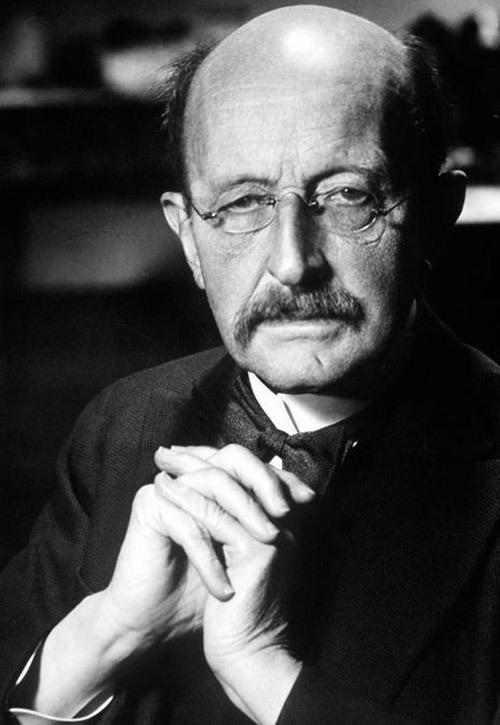
Max Karl Ernst Ludwig Planck (1858-1947), German theoretical physicist, founder of quantum mechanics, Nobel prize winner.
And it turned out that in the quantum world, these properties are all material objects: fields, elementary particles and the atoms and even some molecules, which to the quantum world and does not belong, i.e., all matter! And we with you that all of this consist the worse? It would be convenient: be it so, that of necessity. Want to approve (in the literal sense of the word) – show "corpuscularity" of their atoms. Need somewhere to move quickly, or penetrate into a crack, or even through any not too dense wall, went in the wave condition and flew at a speed close to the speed of light... But not until all turns out.
A remarkable illustration of the unusual behavior of wave-particles of the microcosm is the so-called double slit experiment. At the beginning of the XIX century with its help, the English physicist Thomas young proved that light was a wave (from the time of Newton, light was considered a stream of particles). In the twentieth century, this experiment (and to this day physicists no-no, spend any of its varieties) has allowed to realize the dual nature of the microcosm. That is, it turned out that both are right: and Newton, and Jung.
To understand what is this experiment and what amazing insights it leads, I suggest to watch this wonderful five-minute cartoon:
As not only excelled experimenters (including in the last decades) in order to deceive the rebellious particles: tried to change the conditions of the experiment directly on the course, such as instantly introducing, or, conversely, avoiding complex detectors that were supposed to fix the wave and corpuscular properties of a particle literally halfway from the source to the screen. No effect of these manipulations is not allowed. If scientists are trying to capture an electron (photon, neutron, proton, etc.) as a particle, it always manifests itself as a particle: the screen display will point. If the same experiment are not trying to do or measured solely by its wave properties, manifests itself as a wave.
All this gave the opportunity to some physicists argue that to say that the electron has wave-like properties incorrectly. The wave properties of a certain physical reality, which in the measurement manifests itself as an electron (the same can be said about any other particle).
But this is only the beginning of strange things, most strange, of course, come.
The idea of the microcosm as the universal wave-particle duality emerged from the physicists to the mid 20-ies of the last century. In 1926, Austrian physicist Erwin Schroedinger came to the key to the quantum physics concept of wave functions, which reflect the state of micro-objects. He formulated the equation describing change in this status over time (which was the basic equation of quantum mechanics). In the same year, the physicist and mathematician from Germany Max born proposed the so-called probabilistic interpretation of the wave function. After his work it became obvious that the wave function is a "probability wave" behavior of quantum systems. And that quantum mechanics, unlike classical science, which operates only probabilities.
All points over i in this question have placed Werner Heisenberg, at the time a new Professor at the University of Leipzig, formulated the so-called uncertainty principle. The essence of this principle is to ensure that it is impossible simultaneously to determine coordinates of a particle and its momentum (speed). So, if a researcher with a sufficiently high probability to locate the particle, then its velocity will remain for him a mystery. And Vice versa.
So we have physicists, only to find the position probability of the particles and their speed. As usual for many of us, schooling allowance model of the atom around the nucleus in their orbits revolve electrons, is actually very far from reality. No of the orbits of the electrons there, and they form something like surrounding the nucleus of clouds of different energy levels, called orbitals, and thus are themselves everywhere and nowhere at the same time. Including, perhaps, somewhere in a neighboring or even a distant galaxy. Or just anywhere. So can behave themselves atoms. At least, until the measurement of their parameters. And this is not a joke and is not meaningless.
Here is how describes this situation well-known popularizer of science, American physicist, Professor Michio Kaku:
Explaining its graduate students the strangeness and quirkiness of quantum theory, I sometimes ask them to calculate the probability that the atoms of their bodies suddenly run away and gather again on the other side of a brick wall. Such teleportation is forbidden in Newtonian physics, but not contrary to the laws of quantum mechanics. The answer, however, is that such an event would have to wait until the end of the universe and even longer. (If you are using a computer plotted Shredingera wave function to a private body, you would find that it is very much like the body itself, but it looks as if a little shaggy, as some of your waves spread beyond it in all directions. Some of them reach even distant stars. Therefore, there is still a tiny probability that one day you suddenly Wake up on a distant alien planet). Michio Kaku, "Physics of the impossible".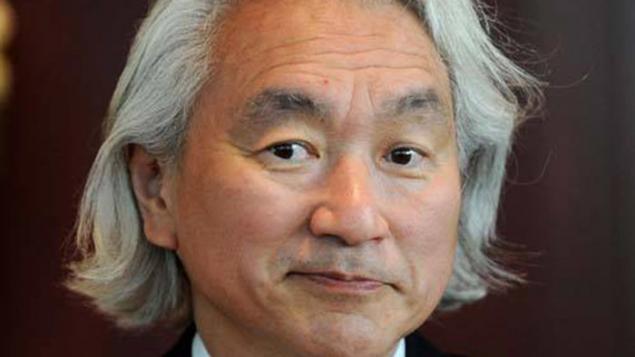
Michio Kaku, an American physicist of Japanese origin (from the United States came even his grandfather), Professor. Best known as an active popularizer of science.
The possibility that electrons are in many places simultaneously, is the Foundation of all chemistry.
All chemistry, says Michio Kaku, based on the idea that electrons can be simultaneously in several places; it is this "joint possession" of the electrons, which manage to simultaneously belong to two atoms, which holds in place the atoms in the molecules of our body.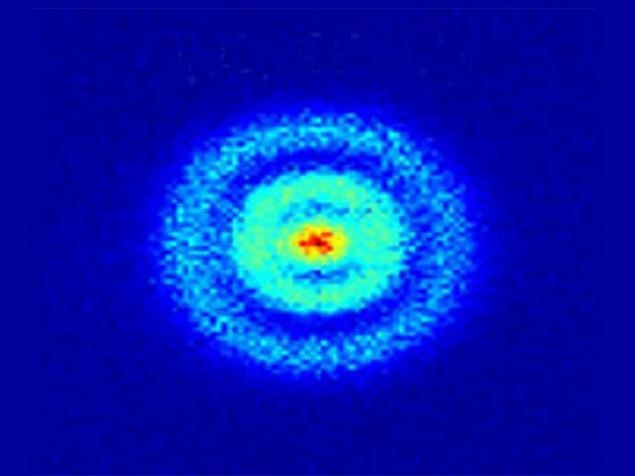
The hydrogen atom, made using a quantum microscope. Recall that in the hydrogen atom with only one electron. And all the "clouds" he makes one. To be more precise, it is the interference pattern caused by this electron detector. In other words, this "photograph" of the wave function of an electron in an atom.
Another consequence of the principle of uncertainty: any measurement perturbs the measured system. It should be noted that the same is true for measurements in our familiar, classical world. Even if the seller is weighing the sausage, this sausage communicates with weights, which means that it's something at least slightly changed (cases when because of interaction of the seller with weights significantly varied weight sausages, we'll leave aside). But usually this kind of perturbation is so small that can be neglected. In the quantum world it is not so. There the more accurate the measurement, the more changes of the measured system. That is, according to the doctor of physico-mathematical Sciences, Professor Mikhail Mensky, the fee for the information. Moreover, it is this system, the measurement changes so much that goes into a state, whose measurement did not exist. And this is a weak formulation. The full and accurate wording would be: "... in quantum mechanics, reality is happening in the measurement process and understanding by the observer of the measurement result" (M. B. Mensky, "Man and quantum world".)

Mensky Michael B. (left) — doctor of physico-mathematical Sciences, Professor, chief researcher of the Physical Institute. Lebedev RAS
In 1932 the famous American mathematician John von Neumann proposed and mathematically justified the so-called postulate of reduction. The essence of this postulate is that the observed quantum system at the time of measurement instantly, abruptly changes its state and becomes a specific value, which fixes the observer. Prior to measurement the system is in all possible States simultaneously! As in the case of an electron rotating round a nucleus which, in fact, can be everywhere and nowhere. If to draw an analogy with the condition of any man in this world, he (assume a male) must be at the same time: an embryo, a child, a polygamist, an old bachelor, a world champion in run on 400 metres with barriers, lame from birth, the paralytic, the President, the oligarch, the poor, the Prosecutor, the prisoner, a young girl, woman, old man and old woman, a corpse, a hermaphrodite, Korean, Russian, native Londoner and a resident of Rome, as well as does not exist... in short, all those what will be his imagination, plus an infinite number of those conditions that he would never, as the imagination of our still very limited.
Such a state of a quantum object or system as a whole is called a superposition. It is in this superposition is the whole quantum world. In the measurement of all the probabilities is shown only one, the rest disappear, and physicists call this phenomenon a reduction of the wave packet or collapse of the wave function.
The collapse of the wave function (almost a joke)
If you, dear reader, think that all physicists – people are crazy and are willing to put up with the above picture, then you certainly are mistaken. Since the birth of quantum mechanics and to this day its findings there is a fierce struggle. Including those who the picture of his own intellect and with his own hands. Albert Einstein until the end of life could not believe in her reality, and noted in a letter no less eminent Danish physicist Niels Bohr that "I am sure God does not play dice" (meaning that the world cannot exist according to the laws of probability). Bor asked Einstein not to tell God what to do. Einstein considered quantum mechanics incomplete, believed in the existence of himself and tried to find a deeper, more fundamental theory, which would have saved quantum mechanics from the probability and depends on measuring a particular system or not. "You really think that the Moon exists only when you look at her?", — sadly he asked one of his colleagues.And another wrote: "What achieves great success the quantum theory has, the more stupid she looks." (A. Pais. The scientific work of A. Einstein)
For several years the two geniuses, Einstein and Bohr, led a discussion about the interpretation of quantum mechanics. Einstein came up with new thought experiments, which were, in his opinion, to refute such an unusual view of reality. And every time the Bor, defended the validity of quantum theory, was right. The most famous thought experiment proposed by Einstein and his colleagues Boris Podolsky and Nathan Rosen, entered the history of science called "EPR paradox" (the first letters of surnames of its authors). He not only shook the quantum theory (the authors intended to prove its incompleteness), but, on the contrary, strengthened the confidence of the scientific world in her innocence and gave rise to new directions.
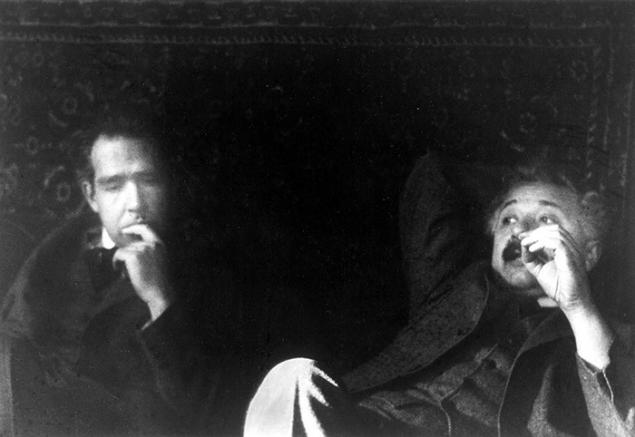
Two geniuses – Niels Bohr and albert Einstein 1925
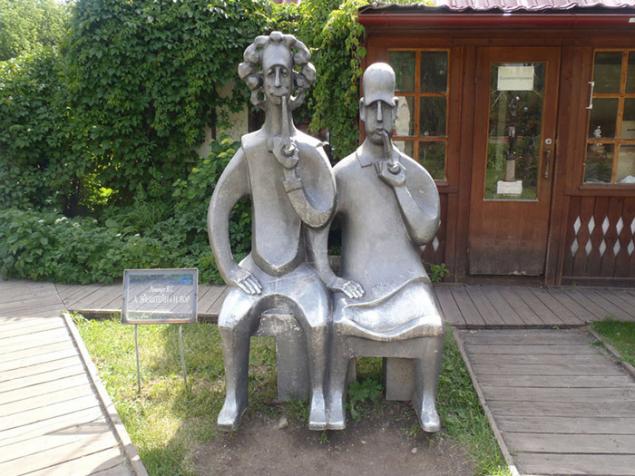
They're after some creative thinking, their lives and works (Moscow Park of arts "Muzeon")
We need not consider here the work of three brilliant physicists, it is quite complicated. But a few words about its consequences in modern physics have to say. There is such a thing as a coherent state. For example, two electrons oscillate in unison. Such as they are able to maintain regardless of how far apart they subsequently disperse. According to quantum theory, if you act on one of them (e.g. measure), then change (to be more precise – to show, as there will be the same "state reduction" or "collapse of the wave function") settings and the second electron. And instantly, I repeat: regardless of the distance. That is, information from one electron can move to another at a speed much higher than the speed of light (possibly with infinite speed). The authors of the EPR paradox and considered absurd.
In our days this phenomenon, the existence of which is experimentally proved (with certainty, in 1982, French physicist Alain ASPE), physicists call quantum entanglement. Entanglement occurs when two particles are connected in some previous General condition. For example, they were formed as a result of decay of some other particle, or his previous life and their parameters in total was some kind of constant: a total charge or total spin (spin is a moment of proper rotation of the particle. Unlike habitual to us macroscopic, particle's "internal" rotation. That is, they rotate as if from within himself, not in relation to the external world).
For example, we can create the conditions under which we know that two electrons have a total spin equal to zero. In this case the spin of one of them will be pointing up and the other down (as you know, these concepts are very conventional; you can also say that the spin projection on a certain axis of the first electron is +1/2, and the second -1/2). And if we measure the spin of one of them, we immediately know the spin of the other, no matter how far it is to the time neither flew away.
Overall, nothing particularly surprising there could not be. Again, if the analogy with the classical world, this would mean roughly the following. Imagine that you have two mobile phones: one red and one blue that you always wear together in one pocket (you never know what quirks). One day, arriving on a planet in another galaxy, you are getting into the usual pocket for your phone, and touch to discover that one of them forgot (never, well you never put your phone in the other pockets). But since these phones are similar in shape, you outright can't determine which one you have, and what is left. You need to get one in the pocket and look at it (if you like, measure its parameters). You take it out and see what took blue. Instantly despite the distance to your home, you know that there were red.
Everything is seemingly very simple: do in such a situation it is surprising that you managed to "measure" the rest of the house phone, "having received information from him" with superluminal (rather infinite) speed. But the analogy is, alas, lame. I recall that in the quantum world, both the electron before the measurement were "any" and "any" spin. Snatching his dimension from this "no" the state of one electron, we are "tearing" and the second, wherever he was. The wave function of both electrons "collapsing" simultaneously. And this will agree, a somewhat different situation than in the case of phones. Einstein did not want to accept this picture ironically called this interaction of quantum particles "spooky action at a distance". I was wrong.
From here two conclusions. First, it can be assumed that everything that happens with us, or rather, with the particles and atoms of our body, can immediately affect some particles and atoms in the most distant corners of our Universe. Well, and Vice versa: change somewhere can lead to changes in us. Let me remind you, all particles and atoms of our body are descended from the beginning of the world or the Big Bang, if you like. And not this we know, and what in those days was confused. Phew! Honestly, I thought of this a few.
And secondly, I hope this news will be more pleasant due to the existence of effects of quantum entanglement in our days it is quite booming in such areas of physics as quantum teleportation (the transmission state of the one quantum object to another from a distance), quantum cryptography (transmission of data that cannot illegally intercept), the creation of quantum computers. And in all these areas there are encouraging practical results.
But the main thing from which decades of discussions about the EPR paradox is that humanity is today forced to admit that the micro-level do not apply such a thing as local realism. It is the language of physicists. And translated into everyday language this means that in its very Foundation of our world is unreal, it contains the infinite space of all probability, and as a inseparable mixture from which our consciousness draws on some obscure us law us the usual picture of life. And a rhetorical question Einstein, does the Moon exist just because you look at her, there is a definite answer: Yes. Because if the moon will be watching someone else in her place may be something quite different or nothing at all. Is it because wolves howl at the moon they see in her what we see. Who can tell, we've never been wolves, right? And if the moon does no one will watch... Well, we'll talk when we discuss the so-called anthropic principle.

What he sees in the moon far?
But what is the moon? The moon is part of our macrocosm, and from the electron before it will be too far. But this is not true, or rather, not so. Michael Mensky (some consider it one of the largest specialists in the field of quantum measurement, I hope rightly) argues: "the Classical understanding of reality never is correct, although in some cases rather rough measurements... does not lead to noticeable errors, that is, is a good approximation". (M. B. Mensky. "Man and quantum world".) I would like to remind that the language of physicists, the word "classical" means roughly the following: "...relate to our familiar macroworld, in which quantum, and relativistic arising from the relativity effects are not taken into account."
We ourselves and all things around us are, as is well understood, consists of those very particles which in fact are points of the perturbation (quanta) physical fields: electronic, electromagnetic, quark etc. So says modern physics. Our bodies in the form in which we perceive them, exist in the average due to the law of large numbers, i.e., the laws of statistics. Most of the trillion, trillion, trillion, trillion bricks our body is how it should be, in the most probable condition. Most, but not all. Remember the "quantum shaggy" wave functions of our body that describes Michio Kaku? In a sense, the real world, of course, is a new quality in relation to the particles that comprise. But this new quality can not depend on the qualities of its component parts. Depends. And much more so than it seems our common sense.
Sam Erwin schrödinger, whose name is simply embossed on the pedestal of quantum theory, as well as albert Einstein and many, many brilliant scientists have tried to disprove its absurd conclusions. To do this, he invented a thought experiment, which went down in history called the paradox of schrödinger's cat. Just today description this paradox serves not to refute the quantum mechanical weirdness, but as a perfect illustration of the linkages of micro and classical worlds.
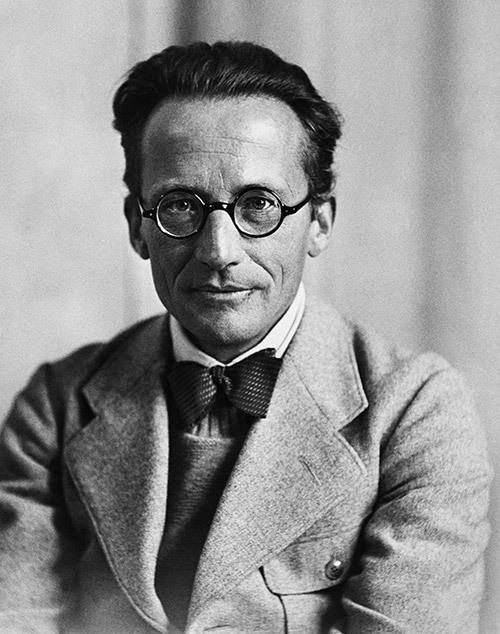
Erwin Schroedinger (1887-1961), Austrian physicist, Nobel laureate, one of the "founding fathers" of quantum mechanics.
Schrödinger invited to imagine a closed box, put there by a cat. Next to the cat box in the atom of a radioactive isotope, which at any moment could fall apart, and a device connected to the meter decay products and spray poison. While the atom has not disintegrated, the cat's all right. If the atom decays, the counter triggers, a special device opens the canister, the cat dies. We don't know when the atom will decay. At any given moment we have only some probability, the collapse of the atom or not. According to quantum theory, the atom is in a superposition: it is both already broke up and yet. But this means that in a superposition and the cat is. It is simultaneously alive and dead. As long as we don't get and don't open the lid and see the cat is alive or not.
I read probably about a dozen descriptions of this thought experiment by different authors. Rejoicing in the human race, show, I have not met one who would have said that, after opening the box, found the dead cat (which, incidentally, is clearly contrary to the theory of probability, but still subscribe to these people). So we went over, opened the box and found a live (!) cat. That is precisely the moment when we realized the result of our measurement, there was a collapse of the wave function, we brought the cat out of superposition with the whole system and now you can safely Popo his milk, reward for participating in the experiment.

Graffiti on the garage in Perm. The inscription reads: "In memory of Schrodinger's cat, 50% affected by quantum mechanics." Photo from the newspaper AIF Perm (author Dmitry Ovchinnikov)
Any normal person of sound mind and memory (but not completed a University physics course in the last 10-15 years) have it all to react like this: "Stop jerking me around! We just don't know collapsed there the atom or not, the cat is alive or dead, poor fellow! And come, look and all learn". No, alas, all is not so simple. This is not the case with two mobile phones described above, where we just didn't know which one I forgot at home. The atom really was in a state of superposition: it is broke and not broke at the same time. And, therefore, the cat was simultaneously alive and dead. Another thing is that he all the time felt (and was he the first full-fledged observer, it is also a question). But I believe that if everything ended well, he never noticed. But to the outside observer, the cat remains in a state of superposition, as does the atom, as long as the researcher did not open the lid.
Our universal, common sense does not agree to accept any other reality except that which is taught us by our life experience. Meanwhile, this other reality exists and its existence is rigorously proved mathematically and confirmed experimentally in the course of the discussion around the EPR paradox. The successful experiment of Alain ASPE, about which we spoke earlier, was preceded by the theory, the Irish theoretical physicist John bell, in which he in 1964 he offered a certain inequality (known to physicists today as bell's inequality).
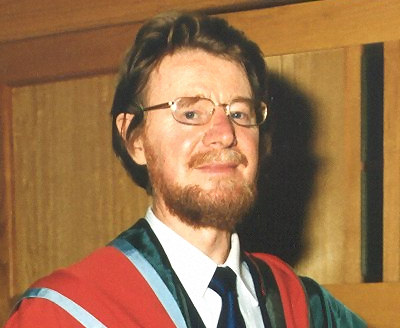
John Stewart bell (1928-1990), Irish physicist at the time of receiving the honorary title at Queens University in Belfast in 1988. He formulated his now-famous under the name of inequality precisely in order to prove that in the quantum theory are not taken into account some hidden parameters.
If these inequalities are described in the bell experiment are observed, therefore, in the quantum theory are not taken into account some hidden parameters. In other words, this would mean that when a quantum measurement, as in the classical world, we are to the measurements just don't know something, measure, learn. For example, we don't know what's in the fridge we have is a delicious cake (wife did that, but said nothing), and then open the door, BAM: cake. In this case, the hidden parameter – wife. It is previously this cake is bought and put in the fridge to make you a pleasant surprise (Oh, she knows that you have a sweet tooth).
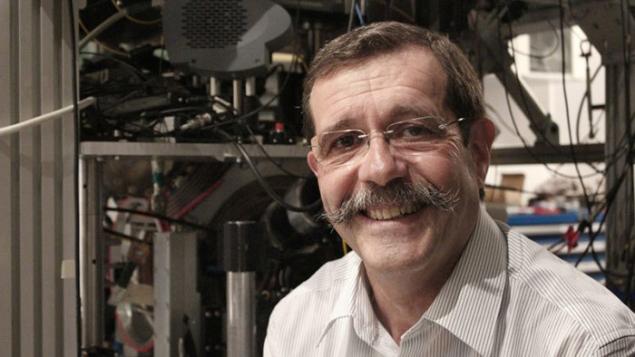
Alain Salas, a French physicist, a specialist in quantum optics. Experimentally proved that bell inequalities are not respected and, therefore, no hidden parameters in quantum mechanics is not.
Proposed bell experiment was very complicated technically. So for almost two decades in full no one could do. Alain Salas was the first. This type of experiments in increasingly complex form regularly to this day (not so much to prove or disprove anything, and for specific studies). Bell's inequality was not performed and not performed that predicted by quantum theory. Wife cake did not buy. But if we measured the state of the contents of the fridge often, so even a few tens of billions of years in a row, who knows, maybe the cake there, sooner or later there would be. But it is in the classical world would have had to wait so long. At the quantum level, when we are not talking about trillions of interacting atoms, and small atoms and subatomic particles, this kind of "cakes" appear constantly, regardless of the diligence of his wife, and only from the result of measurement. According to Michael Mensky: "When a quantum measurement (i.e., any measurement, unless they are fairly accurate, so their results are affected by quantum effects) properties detected by the measurement, may not exist before the measurement". (M. B. Mensky. "Man and quantum world".)
The measurement also produces the observer, i.e., we, our consciousness. And despite the fact that the struggle for the introduction of common sense in quantum mechanics from time to time escalates without the recognition that the very existence of our world depends on our consciousness, nothing at all happens. published
P. S. And remember, only by changing their consumption — together we change the world! ©
Source: www.cablook.com/universe/vsyo-chudesatee-i-chudesatee/

One of these is not the most challenging problems in these years was a Professor at Berlin University, Max Planck. He almost all his life worked on the so-called second law of thermodynamics (about the second beginning of thermodynamics and in General we still have to talk, but later) and just studied spectrum (energy distribution) of one of the types of light radiation. To describe this spectrum, Planck proposed a formula by typing it in quanta, i.e. portions of energy. In other words, Planck proposed to consider light as a set of energy clots, and these clots had a very definite quantitative values.
Planck himself was convinced that his proposed solution – a temporary, purely mathematical approach, not having to reality is irrelevant. Nevertheless, on 14 December 1900, he announced his formula in the report on the meeting of the German physical society. Now, this date is the birth date of quantum mechanics.
But it is now, and then Max Planck for many years could not come to terms with its own opening and everyone was trying to find the "true" solution of the problem. He did not believe, and Einstein, who five years later, in 1905, showed that light is indeed quantized and although there is a wave, but at the same time and the flow of such energy quanta, called photons, what is now knows (at least should know) every student. But the phenomenon, when something manifests itself as a wave, as a particle, called wave-particle duality.

Max Karl Ernst Ludwig Planck (1858-1947), German theoretical physicist, founder of quantum mechanics, Nobel prize winner.
And it turned out that in the quantum world, these properties are all material objects: fields, elementary particles and the atoms and even some molecules, which to the quantum world and does not belong, i.e., all matter! And we with you that all of this consist the worse? It would be convenient: be it so, that of necessity. Want to approve (in the literal sense of the word) – show "corpuscularity" of their atoms. Need somewhere to move quickly, or penetrate into a crack, or even through any not too dense wall, went in the wave condition and flew at a speed close to the speed of light... But not until all turns out.
A remarkable illustration of the unusual behavior of wave-particles of the microcosm is the so-called double slit experiment. At the beginning of the XIX century with its help, the English physicist Thomas young proved that light was a wave (from the time of Newton, light was considered a stream of particles). In the twentieth century, this experiment (and to this day physicists no-no, spend any of its varieties) has allowed to realize the dual nature of the microcosm. That is, it turned out that both are right: and Newton, and Jung.
To understand what is this experiment and what amazing insights it leads, I suggest to watch this wonderful five-minute cartoon:
As not only excelled experimenters (including in the last decades) in order to deceive the rebellious particles: tried to change the conditions of the experiment directly on the course, such as instantly introducing, or, conversely, avoiding complex detectors that were supposed to fix the wave and corpuscular properties of a particle literally halfway from the source to the screen. No effect of these manipulations is not allowed. If scientists are trying to capture an electron (photon, neutron, proton, etc.) as a particle, it always manifests itself as a particle: the screen display will point. If the same experiment are not trying to do or measured solely by its wave properties, manifests itself as a wave.
All this gave the opportunity to some physicists argue that to say that the electron has wave-like properties incorrectly. The wave properties of a certain physical reality, which in the measurement manifests itself as an electron (the same can be said about any other particle).
But this is only the beginning of strange things, most strange, of course, come.
The idea of the microcosm as the universal wave-particle duality emerged from the physicists to the mid 20-ies of the last century. In 1926, Austrian physicist Erwin Schroedinger came to the key to the quantum physics concept of wave functions, which reflect the state of micro-objects. He formulated the equation describing change in this status over time (which was the basic equation of quantum mechanics). In the same year, the physicist and mathematician from Germany Max born proposed the so-called probabilistic interpretation of the wave function. After his work it became obvious that the wave function is a "probability wave" behavior of quantum systems. And that quantum mechanics, unlike classical science, which operates only probabilities.
All points over i in this question have placed Werner Heisenberg, at the time a new Professor at the University of Leipzig, formulated the so-called uncertainty principle. The essence of this principle is to ensure that it is impossible simultaneously to determine coordinates of a particle and its momentum (speed). So, if a researcher with a sufficiently high probability to locate the particle, then its velocity will remain for him a mystery. And Vice versa.
So we have physicists, only to find the position probability of the particles and their speed. As usual for many of us, schooling allowance model of the atom around the nucleus in their orbits revolve electrons, is actually very far from reality. No of the orbits of the electrons there, and they form something like surrounding the nucleus of clouds of different energy levels, called orbitals, and thus are themselves everywhere and nowhere at the same time. Including, perhaps, somewhere in a neighboring or even a distant galaxy. Or just anywhere. So can behave themselves atoms. At least, until the measurement of their parameters. And this is not a joke and is not meaningless.
Here is how describes this situation well-known popularizer of science, American physicist, Professor Michio Kaku:
Explaining its graduate students the strangeness and quirkiness of quantum theory, I sometimes ask them to calculate the probability that the atoms of their bodies suddenly run away and gather again on the other side of a brick wall. Such teleportation is forbidden in Newtonian physics, but not contrary to the laws of quantum mechanics. The answer, however, is that such an event would have to wait until the end of the universe and even longer. (If you are using a computer plotted Shredingera wave function to a private body, you would find that it is very much like the body itself, but it looks as if a little shaggy, as some of your waves spread beyond it in all directions. Some of them reach even distant stars. Therefore, there is still a tiny probability that one day you suddenly Wake up on a distant alien planet). Michio Kaku, "Physics of the impossible".

Michio Kaku, an American physicist of Japanese origin (from the United States came even his grandfather), Professor. Best known as an active popularizer of science.
The possibility that electrons are in many places simultaneously, is the Foundation of all chemistry.
All chemistry, says Michio Kaku, based on the idea that electrons can be simultaneously in several places; it is this "joint possession" of the electrons, which manage to simultaneously belong to two atoms, which holds in place the atoms in the molecules of our body.

The hydrogen atom, made using a quantum microscope. Recall that in the hydrogen atom with only one electron. And all the "clouds" he makes one. To be more precise, it is the interference pattern caused by this electron detector. In other words, this "photograph" of the wave function of an electron in an atom.
Another consequence of the principle of uncertainty: any measurement perturbs the measured system. It should be noted that the same is true for measurements in our familiar, classical world. Even if the seller is weighing the sausage, this sausage communicates with weights, which means that it's something at least slightly changed (cases when because of interaction of the seller with weights significantly varied weight sausages, we'll leave aside). But usually this kind of perturbation is so small that can be neglected. In the quantum world it is not so. There the more accurate the measurement, the more changes of the measured system. That is, according to the doctor of physico-mathematical Sciences, Professor Mikhail Mensky, the fee for the information. Moreover, it is this system, the measurement changes so much that goes into a state, whose measurement did not exist. And this is a weak formulation. The full and accurate wording would be: "... in quantum mechanics, reality is happening in the measurement process and understanding by the observer of the measurement result" (M. B. Mensky, "Man and quantum world".)

Mensky Michael B. (left) — doctor of physico-mathematical Sciences, Professor, chief researcher of the Physical Institute. Lebedev RAS
In 1932 the famous American mathematician John von Neumann proposed and mathematically justified the so-called postulate of reduction. The essence of this postulate is that the observed quantum system at the time of measurement instantly, abruptly changes its state and becomes a specific value, which fixes the observer. Prior to measurement the system is in all possible States simultaneously! As in the case of an electron rotating round a nucleus which, in fact, can be everywhere and nowhere. If to draw an analogy with the condition of any man in this world, he (assume a male) must be at the same time: an embryo, a child, a polygamist, an old bachelor, a world champion in run on 400 metres with barriers, lame from birth, the paralytic, the President, the oligarch, the poor, the Prosecutor, the prisoner, a young girl, woman, old man and old woman, a corpse, a hermaphrodite, Korean, Russian, native Londoner and a resident of Rome, as well as does not exist... in short, all those what will be his imagination, plus an infinite number of those conditions that he would never, as the imagination of our still very limited.
Such a state of a quantum object or system as a whole is called a superposition. It is in this superposition is the whole quantum world. In the measurement of all the probabilities is shown only one, the rest disappear, and physicists call this phenomenon a reduction of the wave packet or collapse of the wave function.
The collapse of the wave function (almost a joke)
If you, dear reader, think that all physicists – people are crazy and are willing to put up with the above picture, then you certainly are mistaken. Since the birth of quantum mechanics and to this day its findings there is a fierce struggle. Including those who the picture of his own intellect and with his own hands. Albert Einstein until the end of life could not believe in her reality, and noted in a letter no less eminent Danish physicist Niels Bohr that "I am sure God does not play dice" (meaning that the world cannot exist according to the laws of probability). Bor asked Einstein not to tell God what to do. Einstein considered quantum mechanics incomplete, believed in the existence of himself and tried to find a deeper, more fundamental theory, which would have saved quantum mechanics from the probability and depends on measuring a particular system or not. "You really think that the Moon exists only when you look at her?", — sadly he asked one of his colleagues.And another wrote: "What achieves great success the quantum theory has, the more stupid she looks." (A. Pais. The scientific work of A. Einstein)
For several years the two geniuses, Einstein and Bohr, led a discussion about the interpretation of quantum mechanics. Einstein came up with new thought experiments, which were, in his opinion, to refute such an unusual view of reality. And every time the Bor, defended the validity of quantum theory, was right. The most famous thought experiment proposed by Einstein and his colleagues Boris Podolsky and Nathan Rosen, entered the history of science called "EPR paradox" (the first letters of surnames of its authors). He not only shook the quantum theory (the authors intended to prove its incompleteness), but, on the contrary, strengthened the confidence of the scientific world in her innocence and gave rise to new directions.

Two geniuses – Niels Bohr and albert Einstein 1925

They're after some creative thinking, their lives and works (Moscow Park of arts "Muzeon")
We need not consider here the work of three brilliant physicists, it is quite complicated. But a few words about its consequences in modern physics have to say. There is such a thing as a coherent state. For example, two electrons oscillate in unison. Such as they are able to maintain regardless of how far apart they subsequently disperse. According to quantum theory, if you act on one of them (e.g. measure), then change (to be more precise – to show, as there will be the same "state reduction" or "collapse of the wave function") settings and the second electron. And instantly, I repeat: regardless of the distance. That is, information from one electron can move to another at a speed much higher than the speed of light (possibly with infinite speed). The authors of the EPR paradox and considered absurd.
In our days this phenomenon, the existence of which is experimentally proved (with certainty, in 1982, French physicist Alain ASPE), physicists call quantum entanglement. Entanglement occurs when two particles are connected in some previous General condition. For example, they were formed as a result of decay of some other particle, or his previous life and their parameters in total was some kind of constant: a total charge or total spin (spin is a moment of proper rotation of the particle. Unlike habitual to us macroscopic, particle's "internal" rotation. That is, they rotate as if from within himself, not in relation to the external world).
For example, we can create the conditions under which we know that two electrons have a total spin equal to zero. In this case the spin of one of them will be pointing up and the other down (as you know, these concepts are very conventional; you can also say that the spin projection on a certain axis of the first electron is +1/2, and the second -1/2). And if we measure the spin of one of them, we immediately know the spin of the other, no matter how far it is to the time neither flew away.
Overall, nothing particularly surprising there could not be. Again, if the analogy with the classical world, this would mean roughly the following. Imagine that you have two mobile phones: one red and one blue that you always wear together in one pocket (you never know what quirks). One day, arriving on a planet in another galaxy, you are getting into the usual pocket for your phone, and touch to discover that one of them forgot (never, well you never put your phone in the other pockets). But since these phones are similar in shape, you outright can't determine which one you have, and what is left. You need to get one in the pocket and look at it (if you like, measure its parameters). You take it out and see what took blue. Instantly despite the distance to your home, you know that there were red.
Everything is seemingly very simple: do in such a situation it is surprising that you managed to "measure" the rest of the house phone, "having received information from him" with superluminal (rather infinite) speed. But the analogy is, alas, lame. I recall that in the quantum world, both the electron before the measurement were "any" and "any" spin. Snatching his dimension from this "no" the state of one electron, we are "tearing" and the second, wherever he was. The wave function of both electrons "collapsing" simultaneously. And this will agree, a somewhat different situation than in the case of phones. Einstein did not want to accept this picture ironically called this interaction of quantum particles "spooky action at a distance". I was wrong.
From here two conclusions. First, it can be assumed that everything that happens with us, or rather, with the particles and atoms of our body, can immediately affect some particles and atoms in the most distant corners of our Universe. Well, and Vice versa: change somewhere can lead to changes in us. Let me remind you, all particles and atoms of our body are descended from the beginning of the world or the Big Bang, if you like. And not this we know, and what in those days was confused. Phew! Honestly, I thought of this a few.
And secondly, I hope this news will be more pleasant due to the existence of effects of quantum entanglement in our days it is quite booming in such areas of physics as quantum teleportation (the transmission state of the one quantum object to another from a distance), quantum cryptography (transmission of data that cannot illegally intercept), the creation of quantum computers. And in all these areas there are encouraging practical results.
But the main thing from which decades of discussions about the EPR paradox is that humanity is today forced to admit that the micro-level do not apply such a thing as local realism. It is the language of physicists. And translated into everyday language this means that in its very Foundation of our world is unreal, it contains the infinite space of all probability, and as a inseparable mixture from which our consciousness draws on some obscure us law us the usual picture of life. And a rhetorical question Einstein, does the Moon exist just because you look at her, there is a definite answer: Yes. Because if the moon will be watching someone else in her place may be something quite different or nothing at all. Is it because wolves howl at the moon they see in her what we see. Who can tell, we've never been wolves, right? And if the moon does no one will watch... Well, we'll talk when we discuss the so-called anthropic principle.

What he sees in the moon far?
But what is the moon? The moon is part of our macrocosm, and from the electron before it will be too far. But this is not true, or rather, not so. Michael Mensky (some consider it one of the largest specialists in the field of quantum measurement, I hope rightly) argues: "the Classical understanding of reality never is correct, although in some cases rather rough measurements... does not lead to noticeable errors, that is, is a good approximation". (M. B. Mensky. "Man and quantum world".) I would like to remind that the language of physicists, the word "classical" means roughly the following: "...relate to our familiar macroworld, in which quantum, and relativistic arising from the relativity effects are not taken into account."
We ourselves and all things around us are, as is well understood, consists of those very particles which in fact are points of the perturbation (quanta) physical fields: electronic, electromagnetic, quark etc. So says modern physics. Our bodies in the form in which we perceive them, exist in the average due to the law of large numbers, i.e., the laws of statistics. Most of the trillion, trillion, trillion, trillion bricks our body is how it should be, in the most probable condition. Most, but not all. Remember the "quantum shaggy" wave functions of our body that describes Michio Kaku? In a sense, the real world, of course, is a new quality in relation to the particles that comprise. But this new quality can not depend on the qualities of its component parts. Depends. And much more so than it seems our common sense.
Sam Erwin schrödinger, whose name is simply embossed on the pedestal of quantum theory, as well as albert Einstein and many, many brilliant scientists have tried to disprove its absurd conclusions. To do this, he invented a thought experiment, which went down in history called the paradox of schrödinger's cat. Just today description this paradox serves not to refute the quantum mechanical weirdness, but as a perfect illustration of the linkages of micro and classical worlds.

Erwin Schroedinger (1887-1961), Austrian physicist, Nobel laureate, one of the "founding fathers" of quantum mechanics.
Schrödinger invited to imagine a closed box, put there by a cat. Next to the cat box in the atom of a radioactive isotope, which at any moment could fall apart, and a device connected to the meter decay products and spray poison. While the atom has not disintegrated, the cat's all right. If the atom decays, the counter triggers, a special device opens the canister, the cat dies. We don't know when the atom will decay. At any given moment we have only some probability, the collapse of the atom or not. According to quantum theory, the atom is in a superposition: it is both already broke up and yet. But this means that in a superposition and the cat is. It is simultaneously alive and dead. As long as we don't get and don't open the lid and see the cat is alive or not.
I read probably about a dozen descriptions of this thought experiment by different authors. Rejoicing in the human race, show, I have not met one who would have said that, after opening the box, found the dead cat (which, incidentally, is clearly contrary to the theory of probability, but still subscribe to these people). So we went over, opened the box and found a live (!) cat. That is precisely the moment when we realized the result of our measurement, there was a collapse of the wave function, we brought the cat out of superposition with the whole system and now you can safely Popo his milk, reward for participating in the experiment.

Graffiti on the garage in Perm. The inscription reads: "In memory of Schrodinger's cat, 50% affected by quantum mechanics." Photo from the newspaper AIF Perm (author Dmitry Ovchinnikov)
Any normal person of sound mind and memory (but not completed a University physics course in the last 10-15 years) have it all to react like this: "Stop jerking me around! We just don't know collapsed there the atom or not, the cat is alive or dead, poor fellow! And come, look and all learn". No, alas, all is not so simple. This is not the case with two mobile phones described above, where we just didn't know which one I forgot at home. The atom really was in a state of superposition: it is broke and not broke at the same time. And, therefore, the cat was simultaneously alive and dead. Another thing is that he all the time felt (and was he the first full-fledged observer, it is also a question). But I believe that if everything ended well, he never noticed. But to the outside observer, the cat remains in a state of superposition, as does the atom, as long as the researcher did not open the lid.
Our universal, common sense does not agree to accept any other reality except that which is taught us by our life experience. Meanwhile, this other reality exists and its existence is rigorously proved mathematically and confirmed experimentally in the course of the discussion around the EPR paradox. The successful experiment of Alain ASPE, about which we spoke earlier, was preceded by the theory, the Irish theoretical physicist John bell, in which he in 1964 he offered a certain inequality (known to physicists today as bell's inequality).

John Stewart bell (1928-1990), Irish physicist at the time of receiving the honorary title at Queens University in Belfast in 1988. He formulated his now-famous under the name of inequality precisely in order to prove that in the quantum theory are not taken into account some hidden parameters.
If these inequalities are described in the bell experiment are observed, therefore, in the quantum theory are not taken into account some hidden parameters. In other words, this would mean that when a quantum measurement, as in the classical world, we are to the measurements just don't know something, measure, learn. For example, we don't know what's in the fridge we have is a delicious cake (wife did that, but said nothing), and then open the door, BAM: cake. In this case, the hidden parameter – wife. It is previously this cake is bought and put in the fridge to make you a pleasant surprise (Oh, she knows that you have a sweet tooth).

Alain Salas, a French physicist, a specialist in quantum optics. Experimentally proved that bell inequalities are not respected and, therefore, no hidden parameters in quantum mechanics is not.
Proposed bell experiment was very complicated technically. So for almost two decades in full no one could do. Alain Salas was the first. This type of experiments in increasingly complex form regularly to this day (not so much to prove or disprove anything, and for specific studies). Bell's inequality was not performed and not performed that predicted by quantum theory. Wife cake did not buy. But if we measured the state of the contents of the fridge often, so even a few tens of billions of years in a row, who knows, maybe the cake there, sooner or later there would be. But it is in the classical world would have had to wait so long. At the quantum level, when we are not talking about trillions of interacting atoms, and small atoms and subatomic particles, this kind of "cakes" appear constantly, regardless of the diligence of his wife, and only from the result of measurement. According to Michael Mensky: "When a quantum measurement (i.e., any measurement, unless they are fairly accurate, so their results are affected by quantum effects) properties detected by the measurement, may not exist before the measurement". (M. B. Mensky. "Man and quantum world".)
The measurement also produces the observer, i.e., we, our consciousness. And despite the fact that the struggle for the introduction of common sense in quantum mechanics from time to time escalates without the recognition that the very existence of our world depends on our consciousness, nothing at all happens. published
P. S. And remember, only by changing their consumption — together we change the world! ©
Source: www.cablook.com/universe/vsyo-chudesatee-i-chudesatee/
